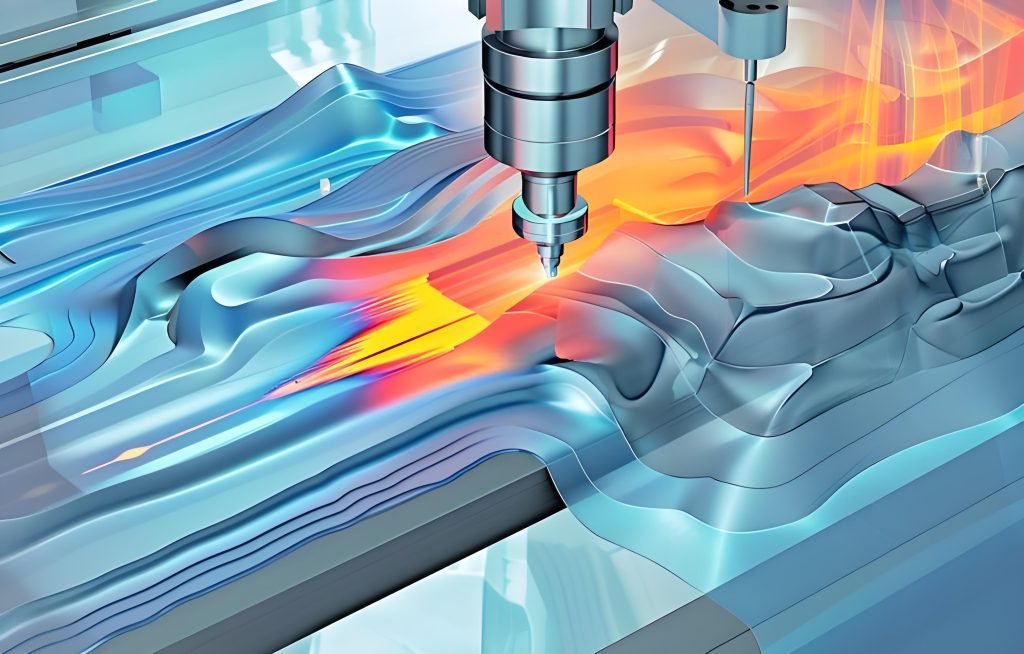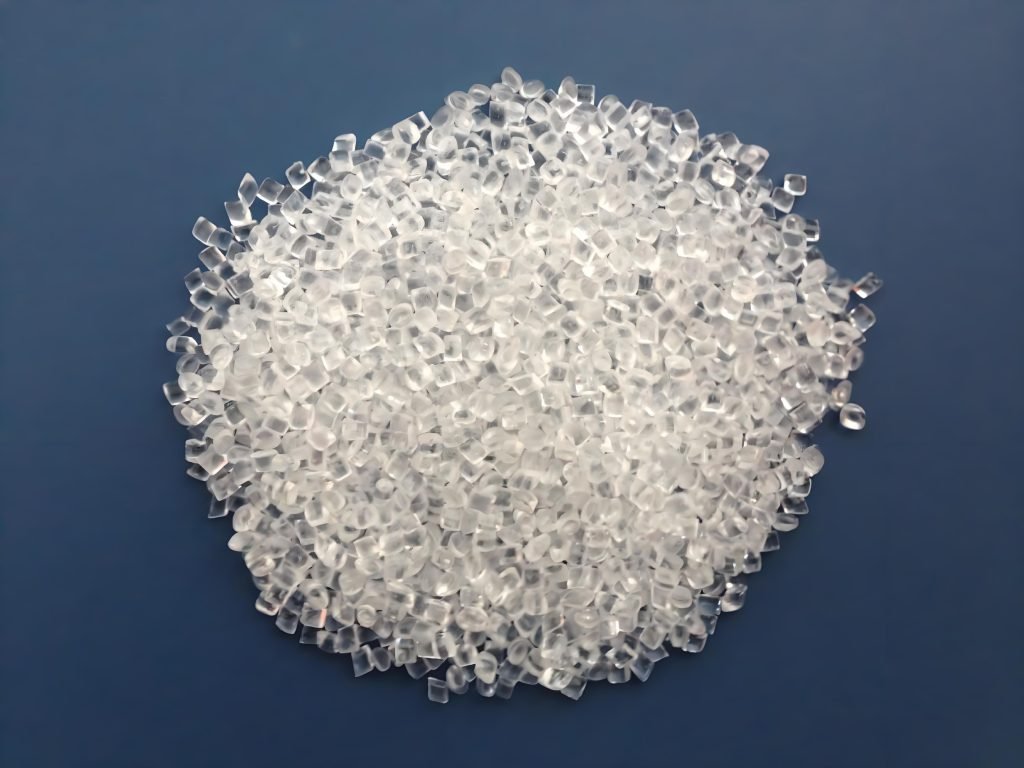Did you know that nearly 70% of automotive components are made from plastics that must withstand extreme temperatures? This statistic highlights the importance of understanding a material’s thermal performance, particularly its Heat Deflection Temperature (HDT).
HDT is a measure of a polymer’s resistance to deformation under a given load at elevated temperatures. Essentially, it tests the stiffness of a material as the temperature increases, indicating the temperature at which a polymer test bar will bend by 0.25 mm under a specific weight.
Understanding HDT is crucial for manufacturers and engineers working with plastic materials, as it directly impacts material selection decisions and product design. This guide will walk you through the concept of HDT, its significance in the plastics industry, and its practical applications in manufacturing processes.
Understanding Heat Deflection Temperature (HDT)

The Heat Deflection Temperature (HDT) of a material is a key indicator of its ability to withstand heat without deforming. This property is crucial in determining the suitability of a plastic material for various applications, especially those involving exposure to elevated temperatures.
Definition and Basic Concepts
Heat Deflection Temperature, also known as Deflection Temperature Under Load (DTUL), is defined as the temperature at which a polymer or plastic sample deforms under a specified load. This deformation is typically measured using a standardized testing procedure. The HDT value indicates the upper temperature limit at which a material can be used without experiencing significant deformation under load.
HDT vs. Heat Distortion Temperature
The terms Heat Deflection Temperature and Heat Distortion Temperature are often used interchangeably in the industry, although they refer to the same fundamental property. The difference lies in the terminology used by different standards organizations and regions. Understanding that these terms are equivalent is essential for interpreting material datasheets and specifications correctly. Other related terms, such as DTUL and HDTUL, also refer to the same concept, emphasizing the need for clarity when reviewing technical documentation.
The Significance of Heat Deflection Temperature in Manufacturing
The Heat Deflection Temperature is a critical parameter that affects the design and material selection for products. As a key indicator of a material’s thermal performance, HDT helps manufacturers predict how their products will behave under various temperature conditions.
Why HDT Matters for Product Design
For product designers, HDT is a crucial consideration because it directly impacts the performance and reliability of the final product. By understanding the HDT of a material, designers can ensure that their products will withstand the temperatures they will be exposed to during use. This is particularly important for products that will be used in high-temperature environments or applications where thermal stability is critical.
Using materials with a suitable HDT helps in creating products that are durable and less prone to deformation under heat. This consideration is vital in the development of products across various industries, from consumer goods to industrial equipment.
HDT’s Role in Material Selection
When selecting materials for a product, HDT serves as a key parameter for comparing different materials. It helps engineers match material properties to the specific requirements of their application. For instance, when choosing between different grades of the same polymer, HDT can be a deciding factor, as it indicates how the material will perform under thermal stress.
By considering HDT alongside other material properties, manufacturers can make informed decisions about which materials to use, ensuring that their products meet the necessary performance and safety standards.
How Heat Deflection Temperature Is Measured
Measuring Heat Deflection Temperature (HDT) is crucial for understanding a material’s thermal limits. This measurement is vital for ensuring that materials can withstand various temperatures in different applications.
ASTM D648 and ISO75 Testing Standards
The HDT is measured according to specific testing standards, primarily ASTM D648 and ISO 75. These standards outline the procedures for determining the temperature at which a material deforms under a certain load. The test involves a sample bar of the material, typically molded to specific dimensions, which is then subjected to a constant load while being heated at a controlled rate, usually 2°C per minute.
The two standard loads used are 0.46 MPa (67 psi) for softer plastics like polyethylene and 1.8 MPa (264 psi) for more durable plastics such as PEEK or polycarbonate.
Testing Procedure and Equipment
The testing procedure involves submerging the sample bar in a temperature-controlled oil bath and applying a load to the midpoint of the bar using a three-point bending apparatus. The temperature at which the bar deflects by 0.25 mm is recorded as the HDT. Specialized equipment is used to ensure accurate temperature control and measurement of deflection.
The controlled heating rate is crucial for obtaining accurate results, and the test specimens are prepared to ensure consistency and reliability.
Materials with High Heat Deflection Temperature

Materials with high heat deflection temperature are essential for applications where thermal stability is critical. You need materials that can withstand high temperatures without deforming or losing their structural integrity.
Engineering Thermoplastics
Engineering thermoplastics are known for their high heat deflection temperature, making them suitable for demanding applications. These materials are designed to provide excellent thermal stability, mechanical strength, and resistance to deformation under load. Examples include polycarbonate (PC), polyetherimide (PEI), and polyphenylsulfone (PPSU), which offer HDT values significantly higher than standard polymers. For instance, PEI has an HDT of around 200°C, making it ideal for aerospace and automotive applications.
Reinforced Polymers
Reinforced polymers achieve higher HDT through the addition of reinforcing materials like glass fibers, carbon fibers, or mineral fillers. These reinforcements enhance the material’s thermal resistance and structural stability. For example, adding 30-40% glass fibers to polypropylene can more than double its HDT, from 50-60°C to 125-140°C. The type and percentage of reinforcement, as well as its orientation in molded parts, significantly affect the HDT. Reinforced polymers are preferred in applications requiring enhanced thermal stability, such as under-the-hood automotive components.
HDT Values of Common Plastics
Understanding the heat deflection temperature (HDT) of various plastics is crucial for selecting the right material for your application. HDT values provide valuable insights into the performance of plastics under different temperature conditions.
Standard Polymers
Standard polymers typically have lower HDT values. For example, unreinforced polypropylene has an HDT range of 50-60°C. Other standard polymers like polyethylene and PVC also exhibit relatively low HDT values, usually below 80°C.
High-Performance Polymers
High-performance polymers, on the other hand, offer significantly higher HDT values. For instance, polycarbonate (PC) and polyetherimide (PEI) can withstand temperatures above 150°C and 200°C, respectively. These materials are often used in demanding applications where thermal stability is critical.
Reinforced and Filled Grades
Reinforced and filled grades of plastics demonstrate substantially improved HDT values. For example, a 30-40% glass-fiber reinforced grade of polypropylene can have an HDT value range of 125-140°C, more than double that of its unreinforced counterpart. The addition of glass fibers, carbon fibers, or mineral fillers enhances the thermal stability of the base polymer, making these materials suitable for applications requiring high heat resistance under load, typically measured at 1.8 MPa.
Factors That Influence Heat Deflection Temperature
Understanding the factors that affect Heat Deflection Temperature (HDT) is crucial for accurately predicting material performance in real-world applications. While HDT provides valuable information about a material’s short-term performance under load at elevated temperatures, it is only an estimate and does not predict the final part or component’s performance.
Material Composition and Additives
The composition of a material and the additives used significantly influence its HDT. Additives such as fillers, reinforcements, or plasticizers can alter the material’s thermal properties. For instance, adding glass fibers to a polymer can enhance its HDT by improving its stiffness and resistance to deformation at higher temperatures.
Processing Conditions
Processing conditions during manufacturing, such as molding temperature, pressure, and cooling rate, can also impact the HDT of a material. Variations in these conditions can affect the material’s microstructure, leading to differences in its thermal performance. Optimizing processing conditions is essential to achieve the desired HDT.
Environmental Factors
Environmental factors, including exposure time to elevated temperatures, rate of temperature change, and part geometry, play a crucial role in determining the effective HDT in real-world applications. Chemical exposure, humidity, and UV radiation can also modify a material’s HDT. Considering these factors is vital when applying HDT data to actual applications.
Practical Applications and Considerations
The practical implications of HDT are far-reaching, influencing both material selection and product design. Understanding HDT is crucial for ensuring that products can perform under various temperature conditions.
HDT in Injection Molding Processes
HDT is a critical factor in injection molding, as it determines the temperature at which a material will deform under load. This information is vital for designing molds and predicting product performance.
HDT vs. Vicat Softening Point and Glass Transition Temperature
While HDT measures a material’s resistance to deformation under load, other temperature-related properties like Vicat Softening Point and Glass Transition Temperature (Tg) provide additional insights into material behavior.
Vicat Softening Temperature (VST)
VST measures the temperature at which a material softens to a certain degree under a specific load. It’s an important property for understanding material behavior under different conditions.
Glass Transition Temperature (Tg)
Tg represents the temperature range where amorphous polymers transition from a hard, glassy state to a more flexible, rubbery state. Unlike HDT, Tg is a fundamental material property measured through techniques like DSC, providing insights into molecular mobility and relaxation processes.
Conclusion
In conclusion, Heat Deflection Temperature is essential for ensuring the reliability of plastic products under various thermal conditions. You’ve seen how HDT is critical in material selection and product design, providing valuable insights into a material’s thermal performance under load. Proper understanding of HDT, along with other thermal properties, enables engineers to make informed decisions. Factors influencing HDT, such as material composition and processing conditions, must be considered. By applying HDT data effectively, you can create more reliable products and optimize manufacturing processes, particularly in injection molding.




